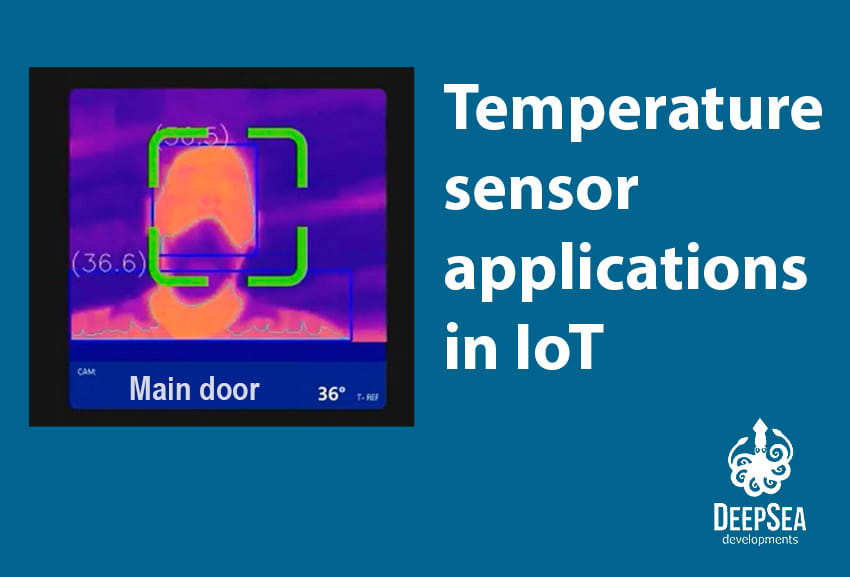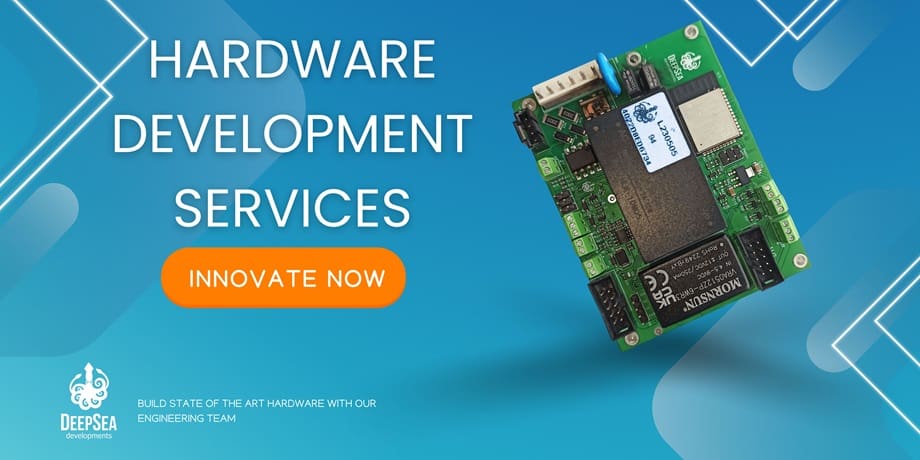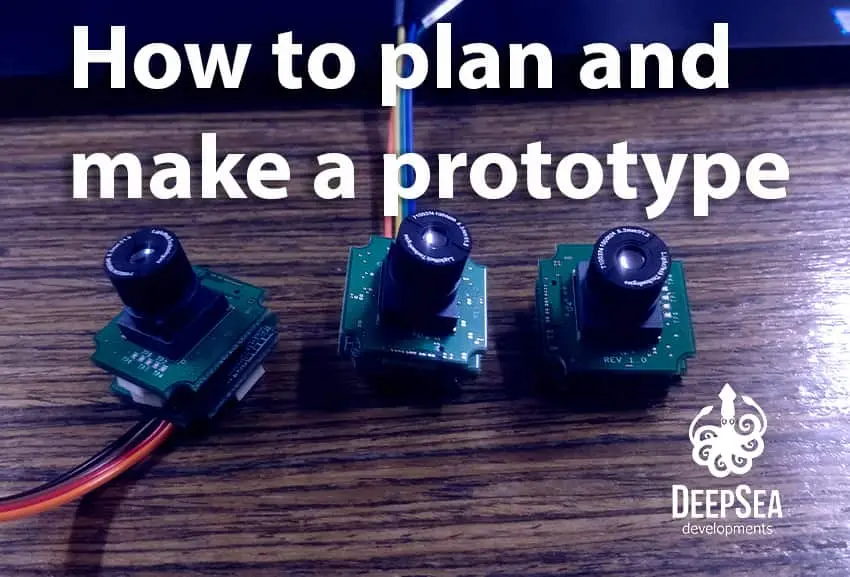Temperature sensors are an essential component of IoT (Internet of Things). Every day we see the growth of several devices for the market containing such sensors; which come to life thanks to a great hardware development service. Let’s see some temperature sensor applications in IoT and how you can benefit from building new devices with this technology.
What are temperature sensors?
This technology represents a big role in the IoT sensing market. Temperature sensors provide real-time readings of temperatures, they provide an output signal that is proportional to the temperature it measures. The signal can be analog or digital, and it is used to trigger a response or control a system; depending on the use for the temperature sensor IoT, different actions can be taken.
Temperature sensors are commonly used in Internet of Things products, since they allow users to quickly get information on temperature measures and perform actions according to the different needs they have.
Types of temperature sensors
There are two main types of temperature sensors: contact and non-contact. Contact sensors require direct contact with the object or environment to measure temperature, for instance, thermostats. On the other hand, non-contact sensors measure temperature from a distance, without any physical contact. The most common type of temperature sensor used in IoT is the thermistor, which is a non-contact temperature sensor.
For example, at DeepSea Developments we built an open source thermal camera called TermoDeep, which can measure body temperature without contact.
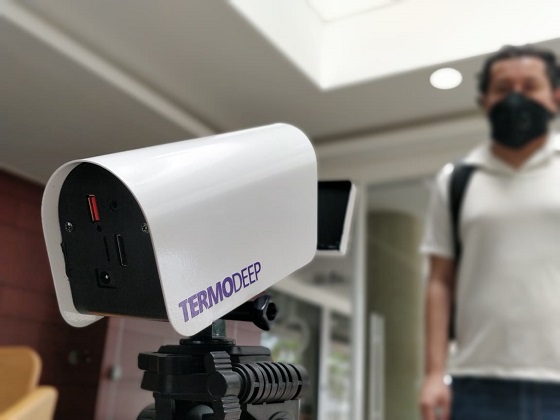
This camera for example can be used in buildings to measure the temperature of the visitors and prevent infections of the residents or workers when a person presents fever – which is shown by the thermal camera; how does a thermal camera work.
Thermistors are popular IoT temperature sensors due to their small size and low power consumption. They are also highly accurate and reliable.
Other types of temperature sensors are thermocouples, resistance temperature detectors (RTDs), and infrared temperature sensors. Thermocouples are contact sensors that measure temperature by converting thermal energy into electrical energy. RTDs measure temperature by evaluating changes in electrical resistance. Finally, Infrared temperature sensors measure temperature by detecting infrared radiation.
What are the benefits of temperature sensors in IoT?
Temperature sensors offer several benefits in IoT applications, including:
- Reliability and accuracy.
- Low cost.
- Compact and lightweight design.
- Low power consumption.
- Ability to function in a wide range of temperatures.
Temperature sensors can also detect changes in temperature over time, allowing for early detection of potential issues. For example, in the medical industry, temperature sensors can monitor the body temperature of patients and alert doctors or healthcare professionals if it is too high or too low, and make adjustments in the treatment.
These sensors are very important for healthcare development services, as they provide useful data to its users.
In the automotive industry, temperature sensors can detect changes in engine temperature, alerting drivers of potential problems and prevent accidents.
The potential of using temperature sensors in IoT
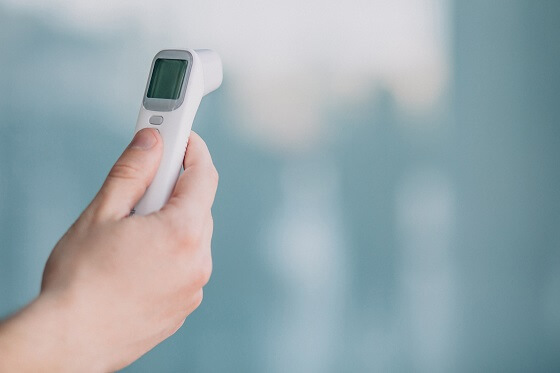
Nowadays, temperature sensors have many applications in the IoT area, such as monitoring and controlling temperature in smart homes, industrial plants, and medical facilities.
To use temperature sensors, they must be connected to a microcontroller or other IoT device. The microcontroller reads the temperature sensor’s output and sends the data to a cloud application for processing and appropriate actions. Bear in mind that it is important to calibrate the temperature sensors regularly to ensure accurate data collection.
Firmware vs software also plays an important role in the good performance of temperature sensors. Not only the sensor needs maintenance, but also the IoT product or device needs a stable platform that allows it to work perfectly.
So, taking the previous information into account, there could be several temperature sensor applications in IoT: Automotive, retail, industry, water, energy, agriculture, and consumer electronics, among others. All these areas can benefit from temperature sensors. For instance, they can send alerts regarding the engine temperature of a car, or monitor packages that contain electronics, medicine, or meals. Industries can try to figure out what machines are getting the highest temperatures and how they can optimize their functioning to save costs in energy consumption.
Some laptops constantly monitor the temperature of their components, but it is also necessary to provide insights on how to perform better or take precautions when operating them at high-intensity tasks like video editing or programming.
These are some examples that can be analyzed regarding temperature sensors, and how they can improve different activities.
Temperature sensor IoT examples
We already talked about the potential of these sensors, now, let’s mention three real-life examples of temperature sensor applications.
Smart thermostats
Temperature sensors can be used to monitor and control the temperature in different rooms, especially in large homes where it can be difficult to maintain a consistent temperature. Based on the temperature readings, the smart thermostat can adjust the heating or cooling system to maintain a comfortable temperature inside the house.
Wearable fitness trackers
Wearable trackers are a popular type of device that uses temperature sensors to monitor the body temperature of the user. These sensors are usually located on the device itself (often on the wrist). They are used to measure the temperature of the skin and provide readings that can be used to calculate the body’s metabolic rate and other health metrics.
For example, a wearable fitness tracker might use a temperature sensor to monitor the user’s body temperature during a workout. If the temperature rises above a certain threshold, the device could send an alert to the user to make a pause for hydration. This feature is very attractive to people and increases the importance of IoT.
Similarly, if the temperature falls below a certain threshold, the device might recommend adding layers of clothing to stay warm.
In addition to monitoring body temperature, fitness trackers with temperature sensors can also be used to monitor the environment. For instance, the device could alert the user if the temperature in their surroundings is too hot or cold.
Industrial control systems
Finally, temperature sensors are often used in industrial control systems to monitor and control the temperature in manufacturing processes. The temperature readings are used to adjust the heating or cooling of the systems as needed to maintain a stable temperature of the machinery, and thus, guarantee the optimal operational processes.
There are more IoT devices examples to consider, but we thought the ones mentioned above express with ease the sensor temperature uses.

IoT wireless temperature sensor
When we talk about the Internet of Things, we also talk about wireless communication. The IoT protocols play an important role in this case, since the temperature sensor IoT gathers the required information from the user, environment or machine, and then sends this data to the cloud quickly.
It eliminates the need for wires, and facilitates the measurement of temperature. Common uses of wireless temperature sensors include warehouses, factories, and hospitals. Another advantage of these sensors is the way they add value to IoT analytics, since now we know how important it is to make decisions based on information.
Every piece of information we can collect from temperature sensors can boost operations of manufacturing, surveillance monitoring, healthcare areas, and environment monitoring.
If you are thinking about developing a new IoT product, and you want to include temperature sensors, imagine all the potential or applications you can offer to your potential customers. Click below to learn how we can help you out.

